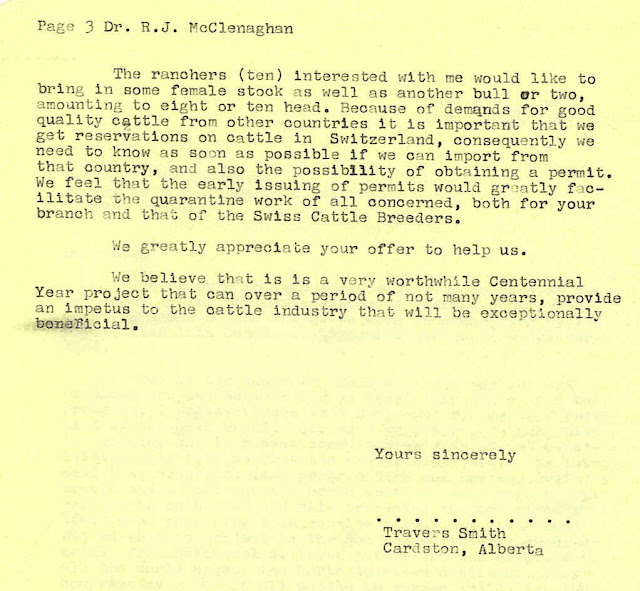From the Beef Today Yearbook ‘ 77, we read:
To get semen out in the country, and to get people using Simmental, semen was put into herds in return for the pick of the heifer calves. Later, more herds were contracted and calves bought back at premium prices. The SBL herd grew from the select picking of these calves. As time went on, however, it was more difficult to get the heifer calves back from the herds, because the herd owners were reluctant to part with them. That was the first and best indication the breed was becoming established. / [SBL Director Fenton Webster recalled] “That was a tremendous job. I remember gathering up over 800 calves in Montana one fall — gathering, weighing and tattooing the whole works.” / … The herd SBL assembled was impressive—the pick of the calves contracted from good commercial herds in the U.S. and Canada. In many cases, it was seeing those females as they developed, that sold breeders on the idea. / “Ed Noad [a prominent breeder] came over one afternoon and saw the herd. He said then — if he had that herd in his pasture — he’d figure he had the best herd in the country.” (BTY’77:85)As reported in “Eleven years later Parisien is still making history” by Edgar Bain, Travers’ brother Frank Smith said:
“… As early as 1968-69 we started to build up a herd referred to as an upgrade herd. We had a large number of cattle as a genetic base.” / Simmental Breeders Ltd acquired 2,000 head of half blood heifers by purchasing semen contracts. Land was leased and up to 12,000 acres were in use. / “We planned to build up a purebred herd through an upgrade herd,” the S.B.L. director points out, “By upgrading from a broad genetic base we felt we would be able to supply the commercial industry’s needs.” (CLJ:Tue.,July 11, 1978)





































